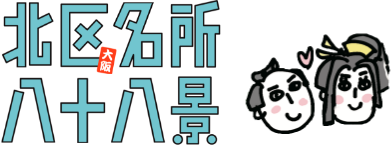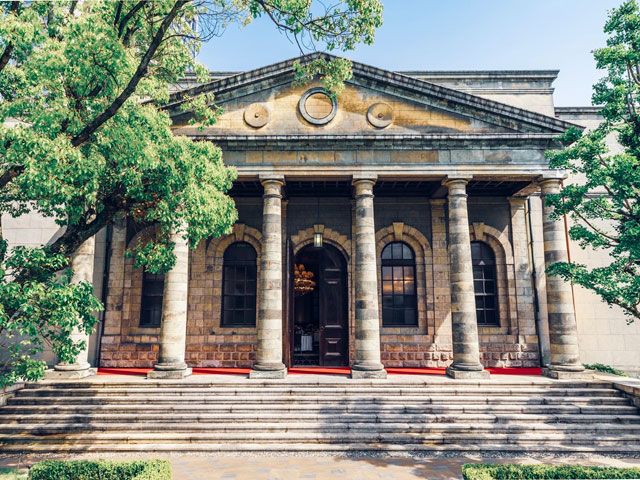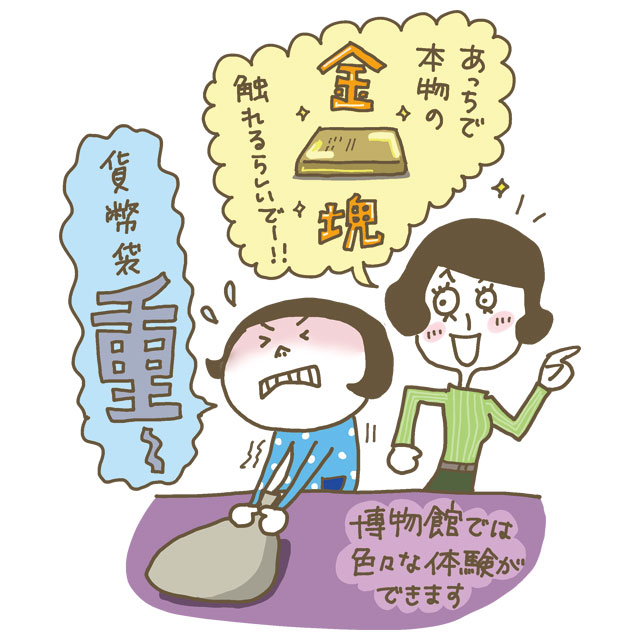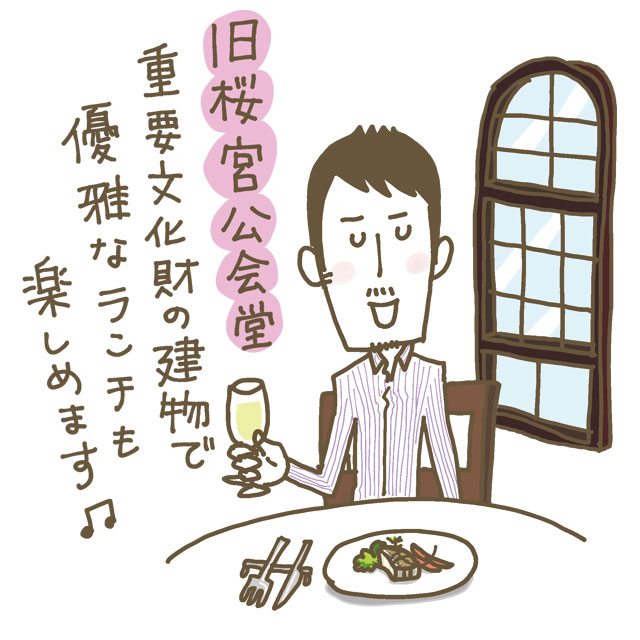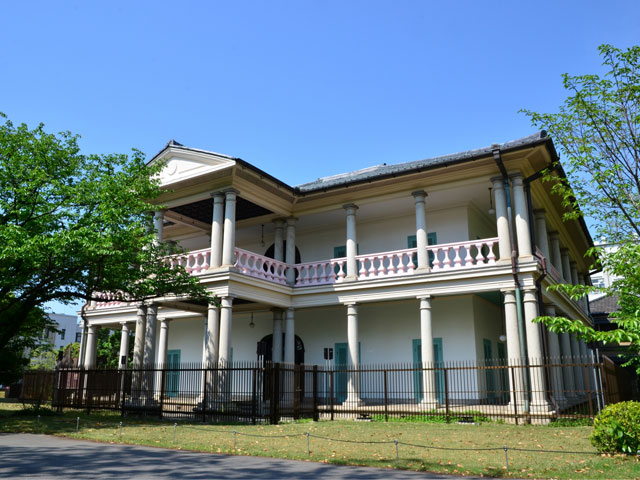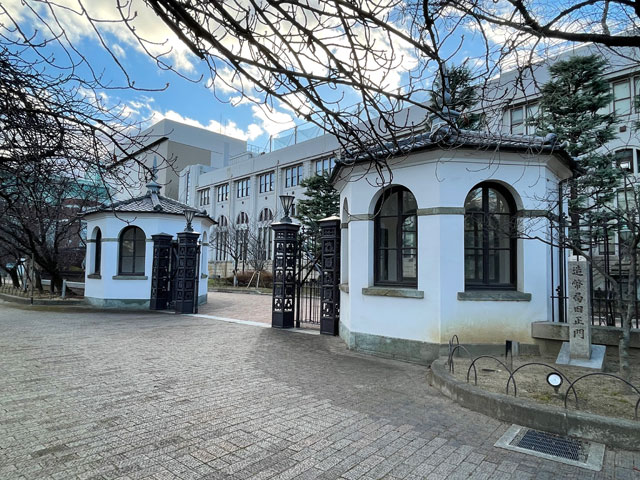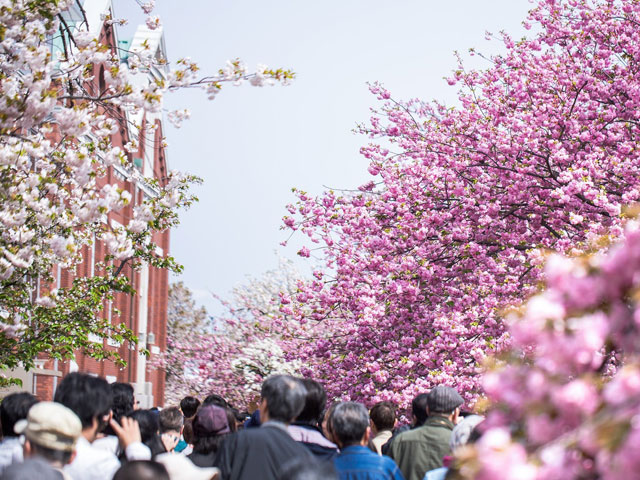The front entrance was relocated here from the original mint building and the Old Sakuranomiya Public Hall was reborn.
The Old Sakuranomiya Public Hall was built in 1935 as the Emperor Meiji Memorial Hall. The front entrance was relocated from the Old Mint Foundry built in 1871.
After the war, it was used as a public hall and library, then closed in 2007. Clues from old blueprints led to a restoration of the interior and the Japanese garden. Nowadays it is used for weddings and as a restaurant, and this once nearly forgotten historic building has been reborn as a place of happy memories.
The Mint was named “Senpukan” by Emperor Meiji.
Senpukan was built as a reception hall in 1871 when the old Mint was founded. It was designed by Thomas James Waters, the same architect that worked on many Western-style buildings in Japan at the start of the Meiji period, including the old Mint. Senpu means “currency,” and kan means “building,” a name that was given when Emperor Meiji visited.
The symbol of Osaka, reborn as the city of finance thanks to the efforts of Tomoatsu Godai
The Mint celebrated its 150th anniversary in 2021. The Meiji administration rebuilt the currency system in 1871 which was in disarray at the end of the Tokugawa shogunate era, rushing to establish a mint to catch up to more advanced countries. Tomoatsu Godai worked to modernize Osaka and establish it as a financial capital, so he purchased machinery from the Hong Kong Mint established by Great Britain, who was already advanced in this field.
The mint was built along the Okawa River, which offered easy access to abundant water. Of the nearly one billion pieces of currency minted annually in Japan, nearly 500 million were produced in Osaka. The anti-counterfeiting measures were some of the best in the world. Commemorative currency, medals, awards, and Olympic medals are also manufactured here. Visitors can view the currency production process on tours and enjoy a trip to the adjacent museum.
